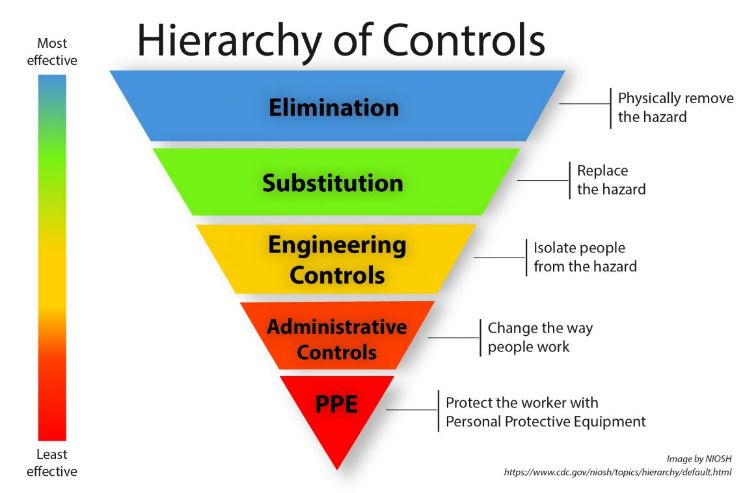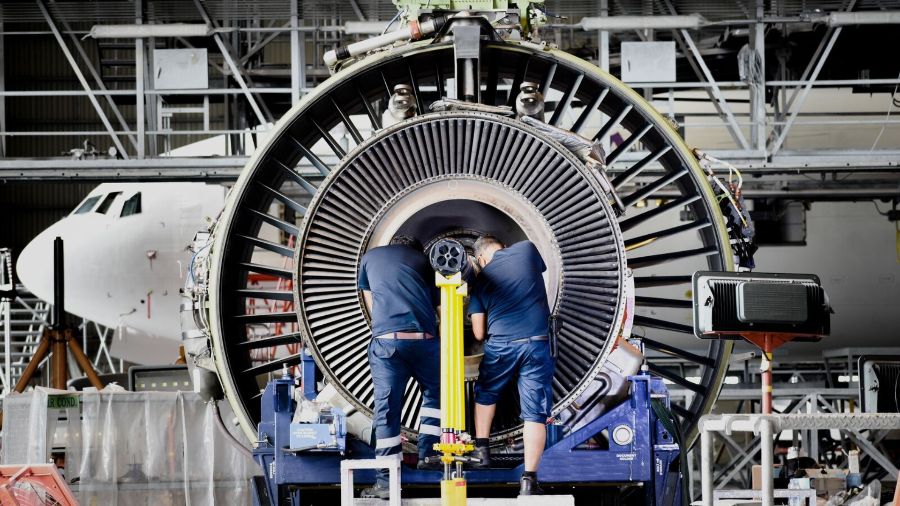Contributor: Logan Steffans, EHS/Facilities Supervisor, Collins Aerospace

After working in the aerospace industry for five years now—you know that saying ‘time flies’—I’ve had the chance to engage with a plethora of folks on the manufacturing floor, learning their story about what brought them into this field of work and what keeps them coming back year in and year out. While working at a site in small-town Iowa, I was astounded to hear how many employees have been there for 20-30 years or more. In many cases, it was their first job out of high school/college, and they plan to retire with the same company as well! Having family and friends working alongside one another provides that sense of belonging, making it not just a cohesive team, but one big family.
This particular facility manufactures/assembles circuit boards which tends towards a lot of manual hand work to get the final product. This in conjunction with the long-tenured workers delivers a recipe for a potential ergonomic nightmare. In my first six months, I found one individual developing discomfort with her left thumb. After assessing her daily work tasks, it was apparent that the current-state work instruction could be improved; using a pinch grip to pick up 200 –300 screws on a daily basis, placing them in a precise location on the circuit board, and drilling into the board within a very small tolerance makes my fingers ache just thinking about it! This person had been working on the product line for several years at the time. Had she felt pain like this previously? Have any other folks on the line experienced similar issues? How long has this specific left thumb pain been going on for? Investigating with the individual/team members and conducting a root-cause analysis is an effective approach to minimize and ultimately eliminate the problem resulting in injury. If one person has experienced an issue, there’s a great chance it will happen to someone else if corrective actions are not effectively put in place.

In each root cause analysis I’ve worked on there have been several actions to take to help the individual. This instance was no different. The hierarchy of controls (pictured left for reference) are useful when understanding the most effective controls to put in place. Implementing stretching programs to cater to the specific ergonomic issues that the individual has based on their type of work is a start. A lot of times companies will roll out ergonomic stretching but not necessarily key in on the type of issues that the person is likely to experience based on their job. Applying rotations was helpful in several ways; first, from an operational standpoint, you are training folks in different areas, so they’re more versatile, while they also help to deviate from one person doing the same repetitive task which can play a huge role in the development of ergonomic issues. Both actions are considered administrative controls. While effective, it’s best to strive towards elimination, substitution, and engineering controls to prevent issues future state more efficiently.
This is where we put our thinking caps on. Can we eliminate or substitute the issue altogether within reason from a financial standpoint? Fully automating the process (i.e., robotics) would eliminate the use for an individual to conduct this work. While that sounds like an easy solution it can take several years of programming, training for the end user to ensure the system functions properly, and a heavy financial burden making such a solution difficult to implement on a right-now basis. What can we do current state? After much research and discussion with the engineering team, it was found that this type of issue is rather common industry-wide. We identified the dual use of a screw presenter and vacuum-suctioning (or magnetic) screwdriver which eliminates the individual’s need to pinch grip the screw and place it in a precise location on the circuit board. A magnetic or vacuum-suctioning screwdriver automates the process and mitigates the need for manual work. The screw presenter distributes the screw in a one-by-one sequence for the user which alleviates having to pick them individually out of a container.
Putting in place a semi-automated process helps the employee stray away from injury, and also has the potential to decrease production turnaround time with adequate training, ultimately preventing further injuries on the line. This solution uses engineering controls to eliminate the hazards which resulted in injury, while in a production facility with manual work, there are still opportunities for improvement. Sometimes finding the most effective solution can be a timely process and take several corrective actions to control. Using ergonomic assessment tools on a periodic basis helps to re-engage with the workforce and analyze the ever-changing production environment. At the end of the day, we all want to go home safe and injury-free and as EH&S pros it’s our duty to make sure that happens.
